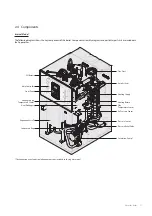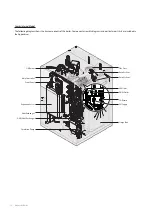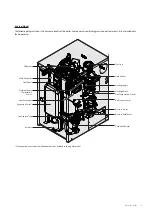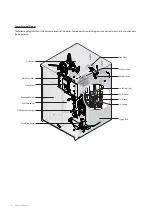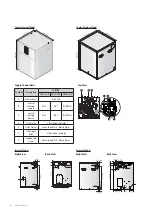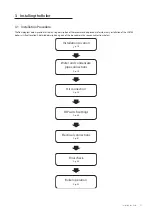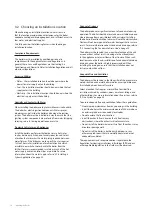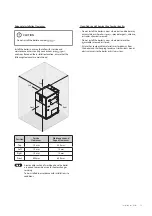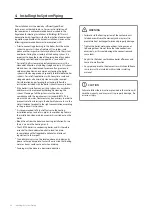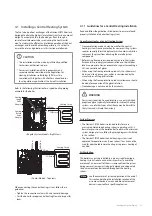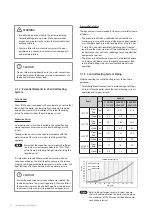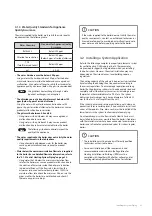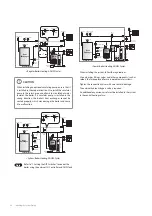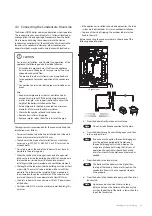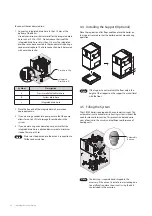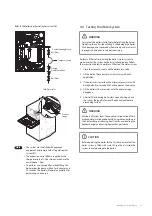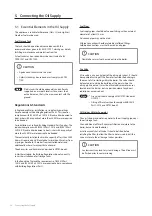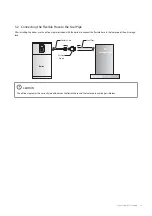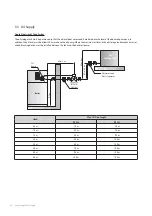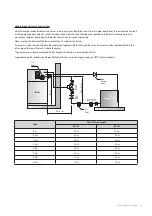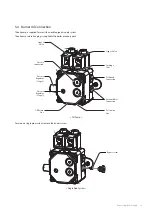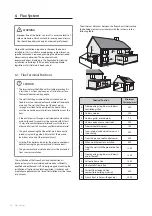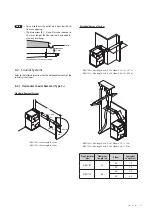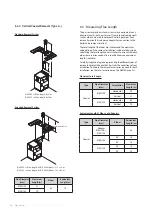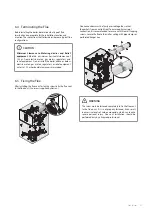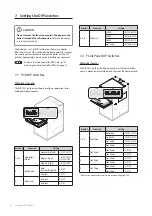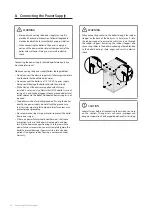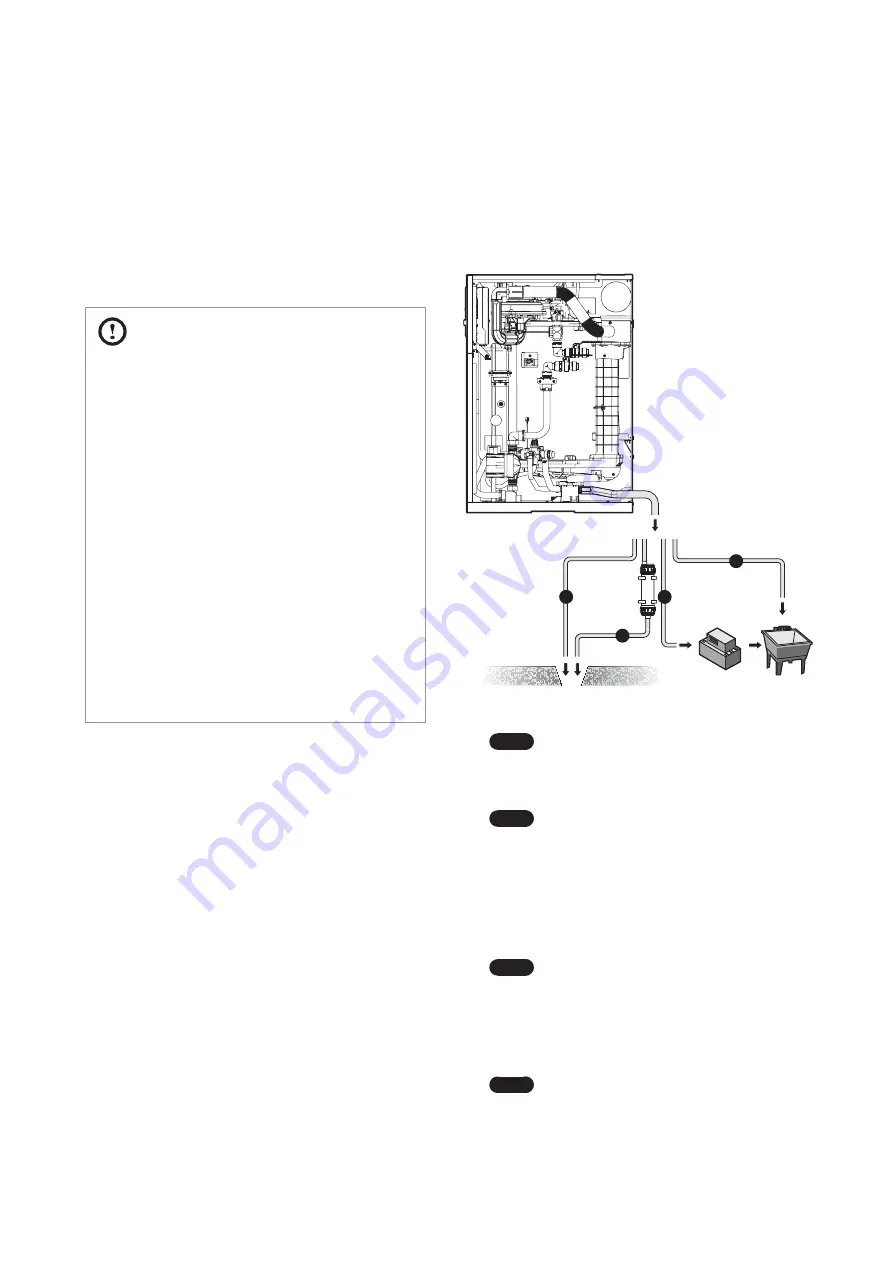
Installing the System Piping 25
Ɣ
If the appliance is installed in non-heated premises, the tube
system must be treated as if it was an outdoor installation.
Ɣ
To prevent the risk of tripping, the outdoor tubes must be
fixed to the walls.
Before connecting the condensate drain, choose one of the
following disposal options:
a
b
c
d
<Right View>
a. From the boiler directly into an external drain.
Note
Do not install a fixed connection for the drain.
b. From the boiler, through a neutralizing agent, and then
into an external drain.
Note
If you choose this option, the neutralizing agent
must be replaced periodically. Depletion of
the neutralizing agent will vary, based on the
usage rate of the boiler. During the first year of
operation, the neutralizer should be checked
every few months for depletion and replaced as
needed.
c. From the boiler into a laundry tub.
Note
The bottom of the boiler must be higher than
the top of the laundry tub to use this option. The
condensate line must have a negative slope to
drain properly.
d. From the boiler into a condensate pump, and then into a
laundry tub.
Note
A pump can be used when there is a long
distance between the boiler and the laundry tub
or when the bottom of the boiler is lower than the
top of the laundry tub.
4.3 Connecting the Condensate Drain Line
The Navien LCB700 boiler creates condensation when it operates.
This condensation has an acidic pH of 2-5. Follow all local codes
and regulations when disposing of condensate from the boiler.
We recommend draining the condensate into the Navien
condensate neutralizer kit, as the alkali in the kit will neutralize
the acid in the condensate. However, other suitable water
disposal methods may be used in accordance with local codes.
CAUTION
For correct installation and trouble free operation of the
appliance the following advice should be followed:
Ɣ
All condensate pipework must ‘fall’ from the appliance
by a minimum of 3 degrees (52 mm per metre) to ensure
adequate condensate flow.
Ɣ
The pipework route must allow air to be supplied back
to the appliance for correct operation of the condensate
trap.
Ɣ
Connection to a rainwater down pipe must include an air
break.
Also:
Ɣ
Keep external pipework as short as possible and not
exceed 3 metres length. If the external pipes exceed 3
metres in length, use a support (optional) to adjust the
height of the boilers installed on the floor.
Ɣ
External pipework should be increased to a minimum
diameter of 32mm and ideally be insulated.
Ɣ
Minimise the number of bends and connectors.
Ɣ
Remove burrs after cutting pipe.
Ɣ
Remove surplus solvent from the interior of the pipe.
The requirements recommended for the condensate drain line
installation are as follows:
Ɣ
For correct condensate drain line installation, the tube must
have a minimum diameter of Ø21.5 mm.
Ɣ
The tube must be made of a material that can withstand
corrosion, e.g. PVC, PVC-U, ABS, PVC-C or PP. It must not be
made of metal.
Ɣ
For safety reasons, the end of the tube must be as close as
possible to the draining point.
Ɣ
When the condensate drainage is connected to a general
drain network inside the building, the effects of overpressure
that could occur inside it must be taken into account,
installing suitable pressure release and ventilation elements.
Ɣ
The length of the tubes outside the building must be as short
as possible. They must also be installed with as much tilt as
possible. The tubes must be insulated if they are exposed
to extremely cold weather or blizzards. If the tubes are not
insulated, they must have a diameter of at least Ø32 mm.
Ɣ
The drain tube must have a minimum tilt of 2.5° downstream
of the boiler.
Ɣ
For tubes with Ø21.5 mm, the maximum permitted length is
3 metres.
Summary of Contents for LCB700-21LC
Page 78: ...78 Appendices 13 2 2 Burner Cover Flame Tube...
Page 92: ...Memo...
Page 93: ...Memo...
Page 94: ...Memo...
Page 95: ......

